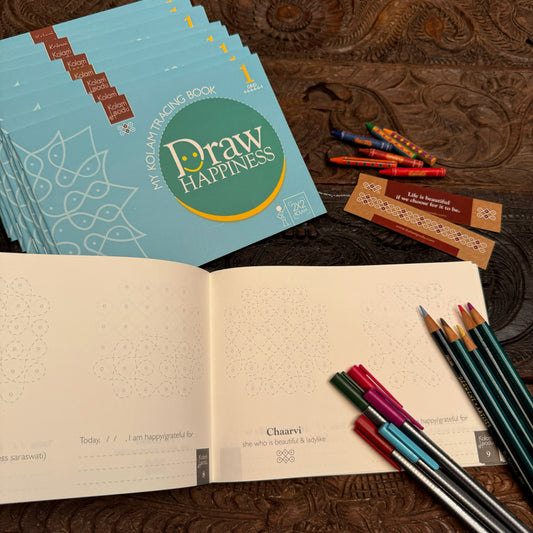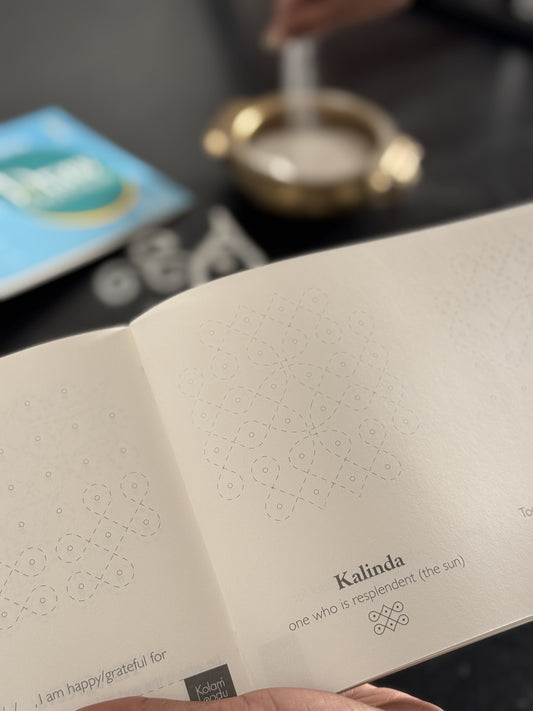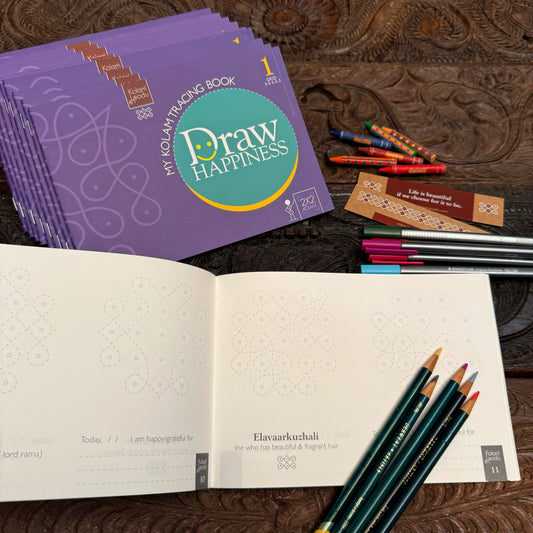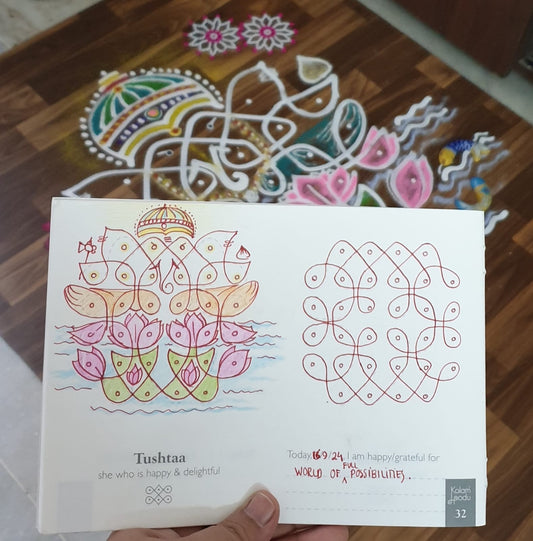Discover how drawing Kolams enhances fine motor skills, especially in children. Kolam-making promotes hand-eye coordination, finger dexterity, and the pincer grasp. It strengthens hand muscles, refines precision and control, and fosters patience and perseverance. Engage in this creative and enjoyable art form to develop essential skills for a more beautiful life.
Fine motor skills refer to the precise movements and coordination of small muscles, typically found in the hands and fingers, that enable individuals to perform intricate tasks and activities. These skills involve the ability to control and manipulate objects with precision, allowing for delicate movements and fine control of hand actions.
Drawing kolams is an excellent activity for enhancing and developing fine motor skills in individuals, especially in children. Here's how drawing kolams enhances fine motor skills:
- Hand-Eye Coordination: Drawing kolams involves connecting dots, creating intricate lines, and filling in colors within confined spaces. To accomplish these tasks accurately, individuals must coordinate their hand movements with their visual perception. This process strengthens the connection between their eyes and hands, improving hand-eye coordination.
- Finger Dexterity: Kolam designs often comprise detailed patterns and shapes, requiring intricate movements of the fingers. As individuals draw these patterns and shapes repeatedly, they develop better finger dexterity. This enhanced finger control is beneficial for various activities, such as writing, typing, and playing musical instruments.
- Pincer Grasp: In kolam creation, artists often use their thumb and index finger to hold the rice flour or color medium, employing a pincer grasp. Regularly practicing this grip during kolam drawing strengthens the muscles in their fingers and thumbs. The pincer grasp is crucial for activities that involve picking up small objects, using utensils, and tying shoelaces.
- Hand Strength: Drawing kolams involves continuous fine movements of the fingers and hands. Over time, this repetitive action helps build up muscle strength in the hands, improving their ability to manipulate objects and perform fine motor activities with ease.
- Precision and Control: Creating kolams requires precise movements of the hands and fingers to draw intricate lines and curves. As individuals practice drawing kolams, they refine their ability to execute delicate movements with accuracy, enhancing their precision and control over hand actions.
- Patience and Perseverance: Designing kolams demands patience and perseverance to complete intricate and detailed designs. Engaging in this art form helps individuals develop these qualities as they meticulously work on their kolams, promoting focus and determination in overcoming challenges.
Engaging in the art of drawing kolams provides a creative and enjoyable way to develop these skills, making it a valuable and enriching activity for individuals of all ages.
Kolam in Tamil Nadu is muggulu in Andhra Pradesh and Telangana, rangoli in Maharashtra, hase and rangavali in Karnataka, alopana in Bengal, to name a few.
Life is beautiful if we choose for it to be. Let's draw happiness!







